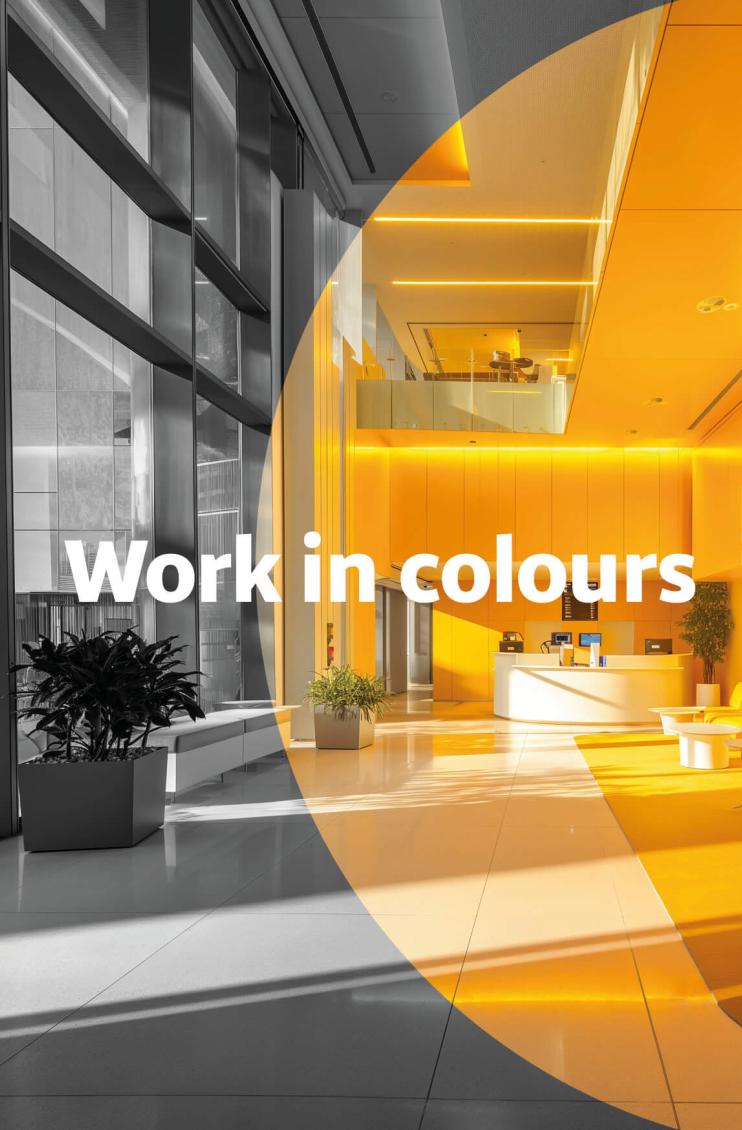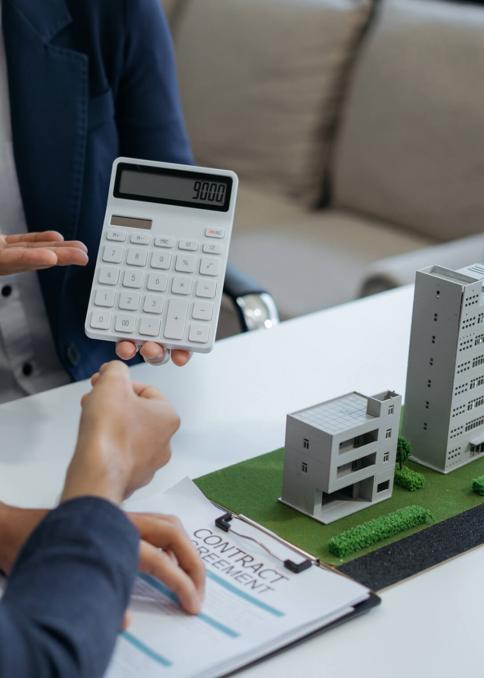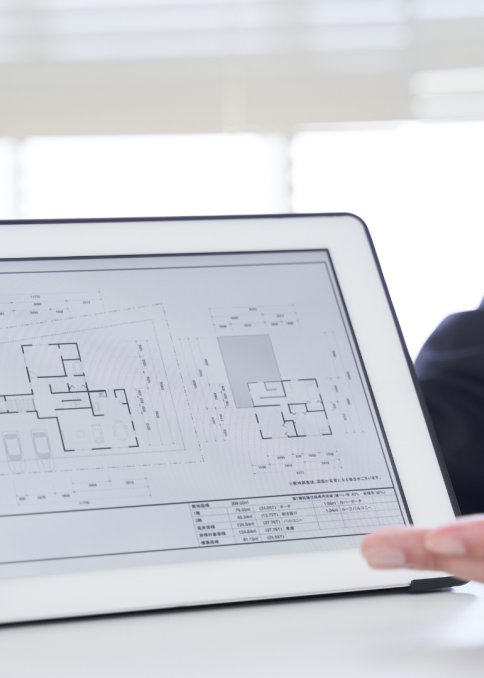Why office colors are far from decorative
Colors are powerful levers for influencing emotions, behaviors, and productivity. They structure the space, support your corporate culture, and influence how your employees feel.
Did you know?
Poorly chosen tones can fatigue, stress, and even disengage your teams. Conversely, a consistent and strategic palette creates a calming and stimulating environment.
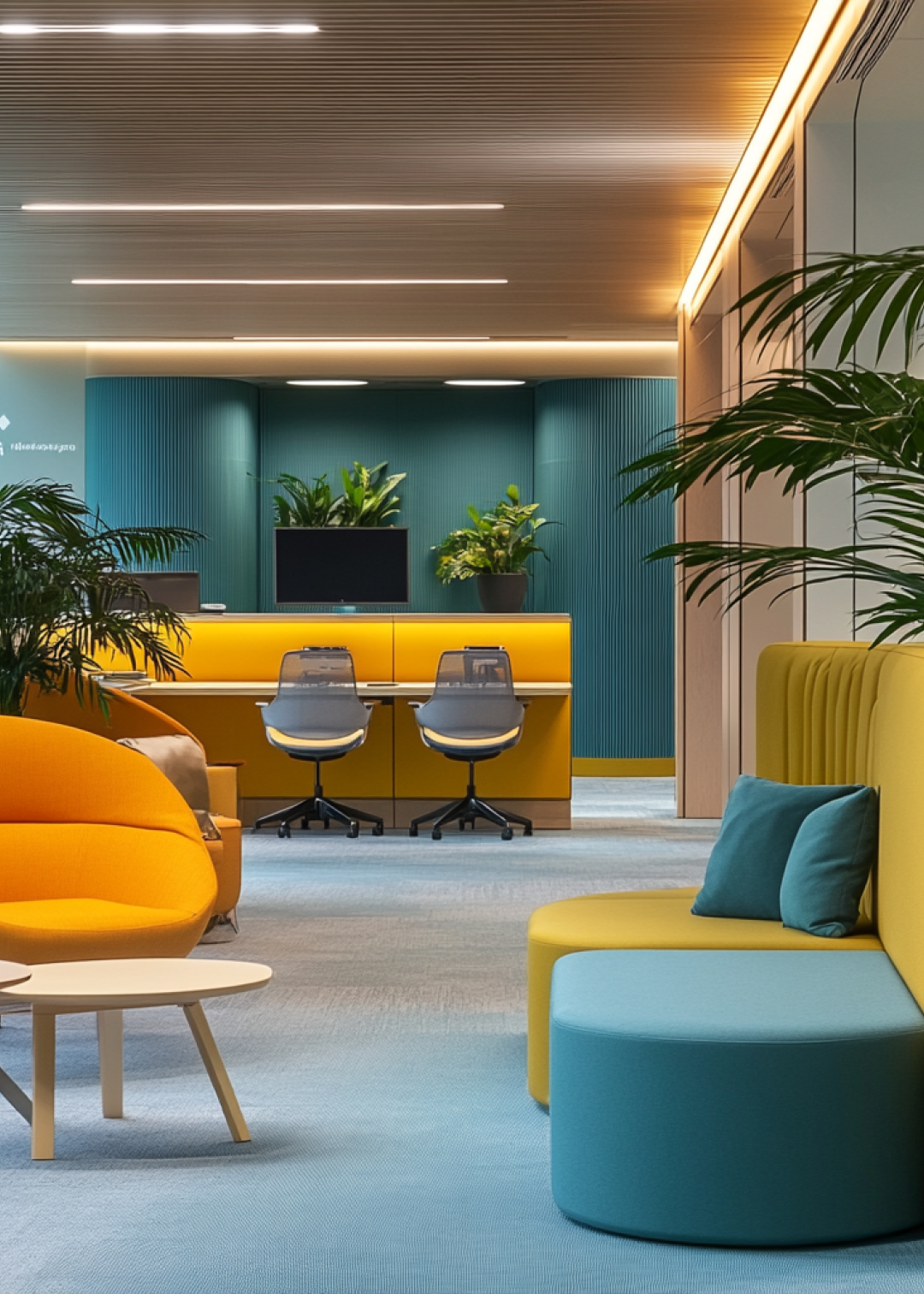
What effects do the main colors produce?
Color |
Sought effect |
Ideal zone |
|---|---|---|
Blue |
Calm, concentration |
Individual workstations |
Green |
Balance, Natural |
Relaxation Areas |
Yellow |
Energy, Creativity |
Brainstorming Rooms |
Red |
Stimulation, attention |
Signage or corridors |
Neutrals (gray, beige, sand) |
Simplicity, elegance |
Backgrounds, partitions, furniture |
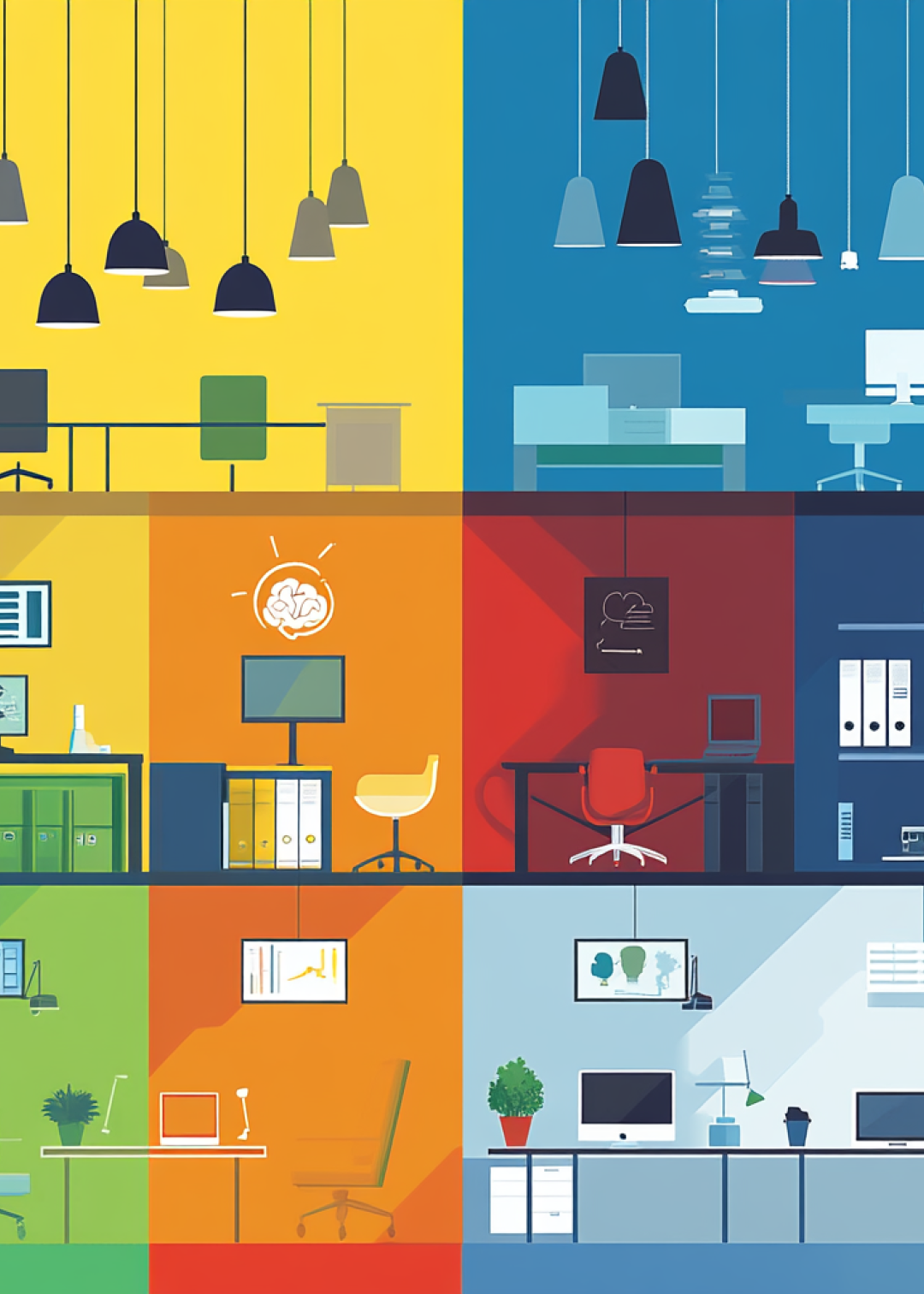
Winning combinations depending on the desired atmosphere
To soothe: Blue-gray + light wood
An ideal duo for concentration areas and quiet spaces.
To stimulate: Pearl gray + soft orange
Perfect for dynamic open spaces without being aggressive.
To inspire : Sage green + sunny yellow + off-white
A vibrant palette for creative or collaborative areas.
To reassure: Terracotta + beige + natural materials
A warm ambiance for waiting or relaxation areas.
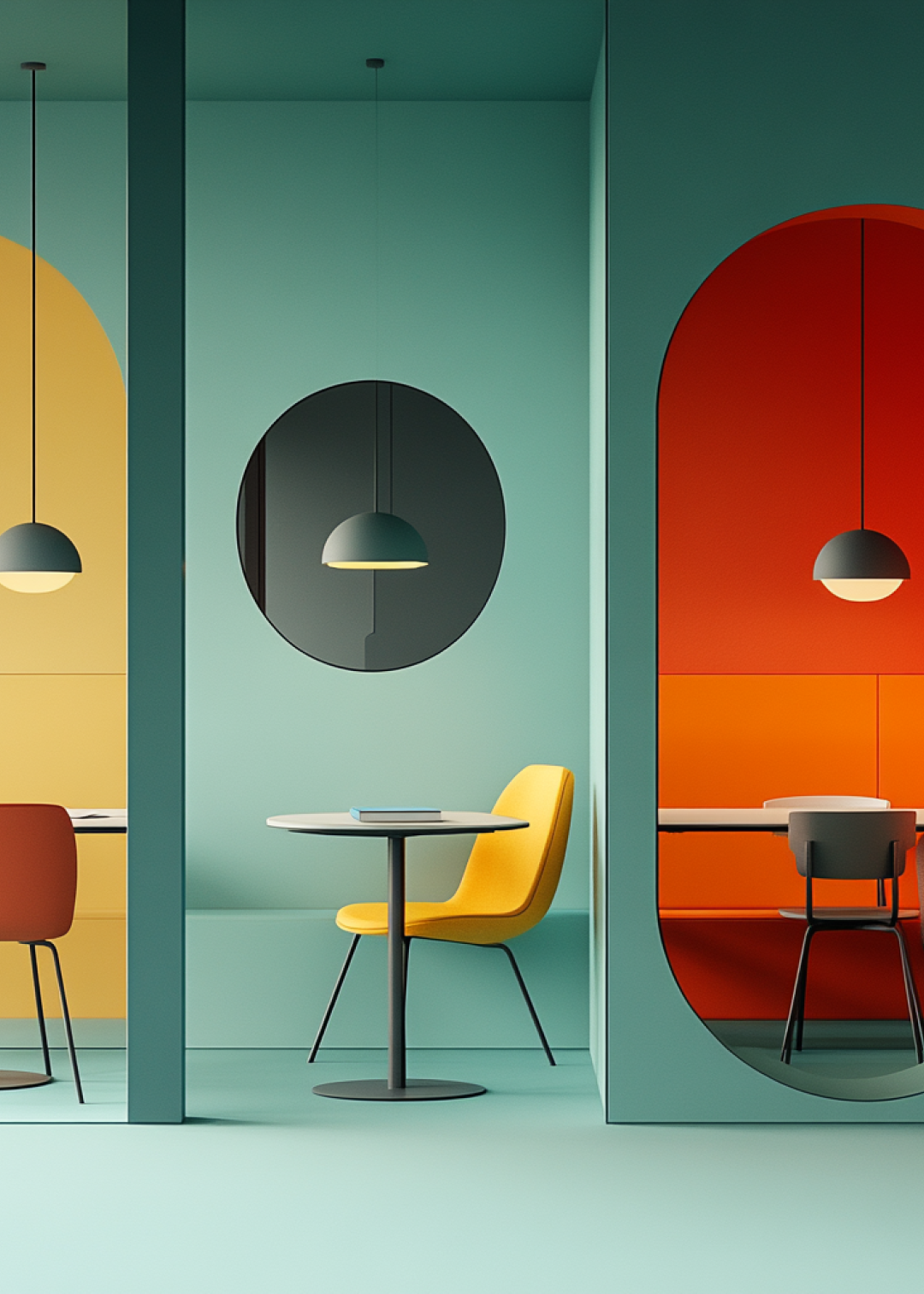
What if your offices were inspired by the comforts of home?
More and more companies are looking to create a homely and comforting atmosphere, where employees feel comfortable, even in hybrid mode.
This involves:
-
Soft and natural tones
-
Warm materials (wood, textiles)
-
Indirect, more enveloping lighting
-
Hospitality-like furniture and cozy areas
👉 It's a way elegant way to encourage a return to the office without forcing it.
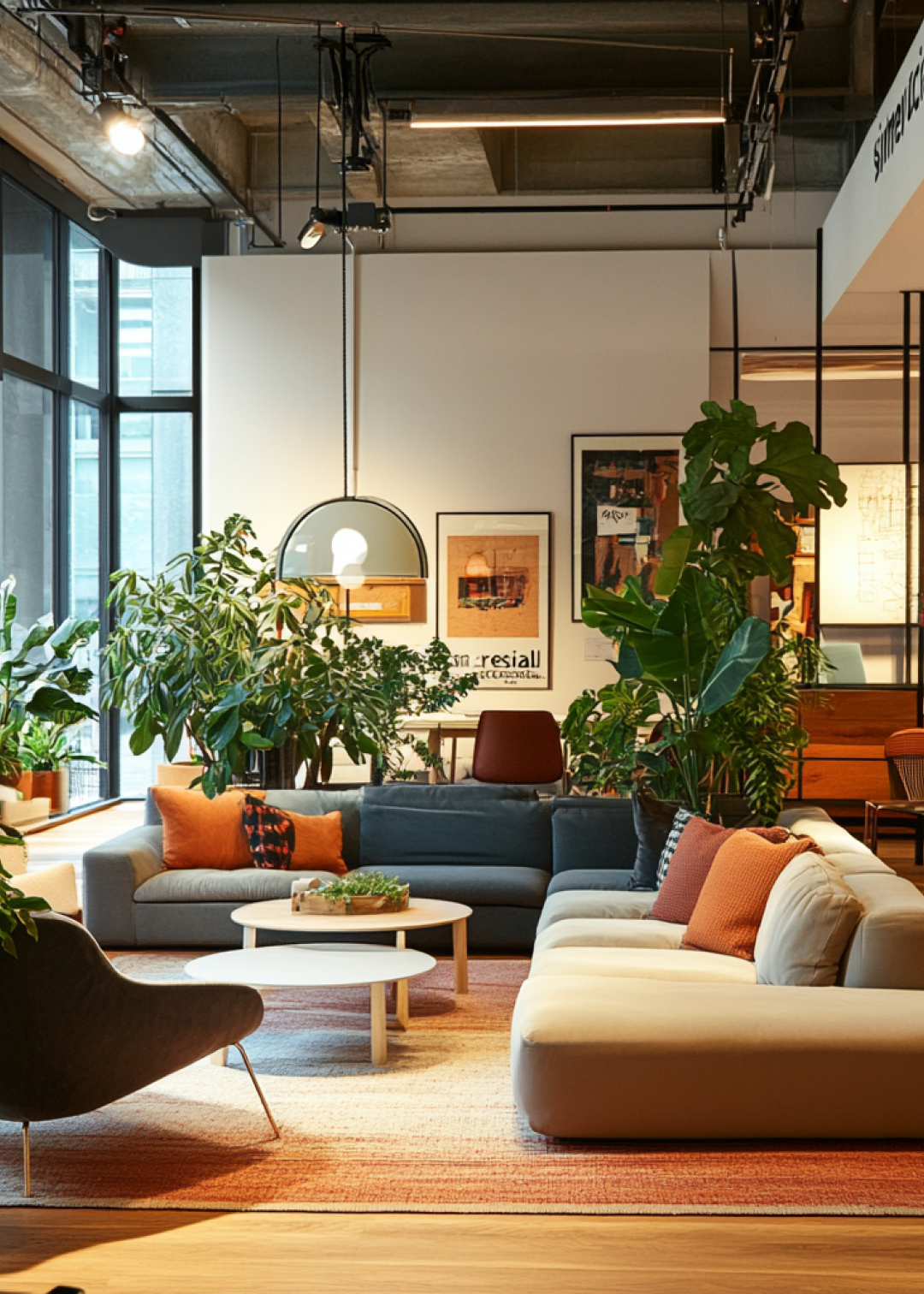
This guide explores how color psychology can influence focus, mood, and collaboration in the office.
